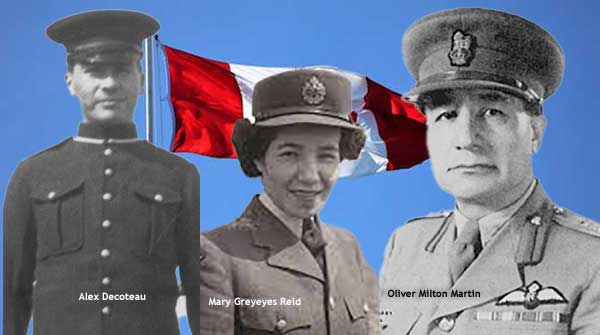One prominent example of this phenomenon occurred in 2021 when red paint was splattered on the statue of Winston Churchill in an Edmonton downtown square named after the wartime leader. Similarly, in the United Kingdom in 2020, the Churchill statue outside Parliament was encased in a protective covering, prompted by a prior incident where vandals had spray-painted the words “Churchill was a racist” on the statue’s plinth to prevent further attacks.
 Mark Milke |
 Kelvyn van Esch |
Canada has also witnessed the targeting and removal of statues honouring its own historical figures over the past decade. This includes statues of John A. Macdonald in Hamilton, Victoria and Montreal, Queen Victoria in Winnipeg, and British Columbia’s first Supreme Court Justice Matthew Begbie.
Turning our focus specifically to Winston Churchill, his enduring legacy as a statesman who persistently raised the alarm for nearly a decade about the threats posed by Adolf Hitler and the genocidal German Nazis cannot be denied. Churchill’s steadfastness in the face of skepticism and isolation proved pivotal when he assumed the role of Prime Minister in May 1940, ultimately contributing to the defeat of the Axis Powers.
Both of us share an interest in preserving and promoting Churchill’s legacy: one of us (van Esch) served in Canada’s Armed Forces Reserve and recognizes full well the pivotal role Churchill played in preventing a dark age from engulfing the world in the 1940s. The other (Milke) is the volunteer president of the Calgary Churchill Society and president of the Aristotle Foundation, which seeks to inject reason into contemporary debates.
The act of vandalism involving Churchill’s statue is regrettable because it, along with those who downplay its significance, makes the mistake of demanding that a historical figure precisely align with contemporary views. Anything less is seen as justification for cancelling Churchill and other critical historical figures.
We disagree. It’s essential to remember that without Churchill’s unwavering determination to resist the Nazis, the course of history might have taken a far bleaker turn. Criticisms of Churchill often stem from myths or misconceptions, such as the false belief that he was responsible for or did nothing to address the wartime famine in Bengal. Debunking these inaccuracies (as historian Zareer Masani did in his article, Churchill and the Genocide Myth) is crucial to gaining a more nuanced understanding of his legacy.
Honouring and celebrating historical figures, despite views or actions that may be at odds with modern sensibilities, allows us to acknowledge their contributions and learn from their mistakes. After all, we, too, hold beliefs and exhibit flaws that future generations may question or find inappropriate.
The proper approach to history is to enrich rather than subtract from it, as cancel culture often tends to do. For instance, we can highlight the contributions of Indigenous individuals who served Canada, like:
Alex Decoteau, who hailed from the Red Pheasant Cree Nation Saskatchewan. Inclined to athletics, he was a member of the 1912 Canadian Olympic Team in Stockholm. He put his physical prowess to use as a runner in the First World War, where, tragically, he lost his life to a sniper’s bullet shortly before his 30th birthday. He was buried in Passchendaele New British Cemetery in Belgium and was given a traditional Cree ceremony in 1985.
Oliver Milton Martin was a Mohawk of the Six Nations Grand River. A remarkable man, he served in both world wars, ending his service in 1944 with the rank of brigadier. During the Second World War, he commanded multiple infantry brigades and was the officer in charge of training hundreds of new recruits for overseas combat. After the war, Martin took up various occupations, eventually becoming a provincial magistrate in Ontario. He was the first Indigenous person appointed to such a position in the province, serving until he died in 1957.
Mary Greyeyes Reid was a member of the Muskeg Lake Cree Nation. She was the first Indigenous woman to enlist in the Canadian Army and served in the Second World War. She was sent overseas to England and continued working in London until 1946, when she was discharged. After returning home, she fought for full voting rights for Indigenous Canadians, demonstrating that Indigenous people can fight for Canada even while working to make Canada a better place to live. Reflecting on her wartime service, she called those years the “best of her life.”
Each of these individuals made significant sacrifices during times of conflict. Their dedication and courage, along with those of countless others, played a crucial role in shaping the free and prosperous Canada we know today.
To summarize, we do not “cancel” historical heroes because they do not conform to contemporary standards. We remember figures like Churchill, and Decoteau, Martin and Reid for their bravery and leadership, and we pay tribute to the sacrifices and valour of all who have contributed to the freedoms we enjoy today.



